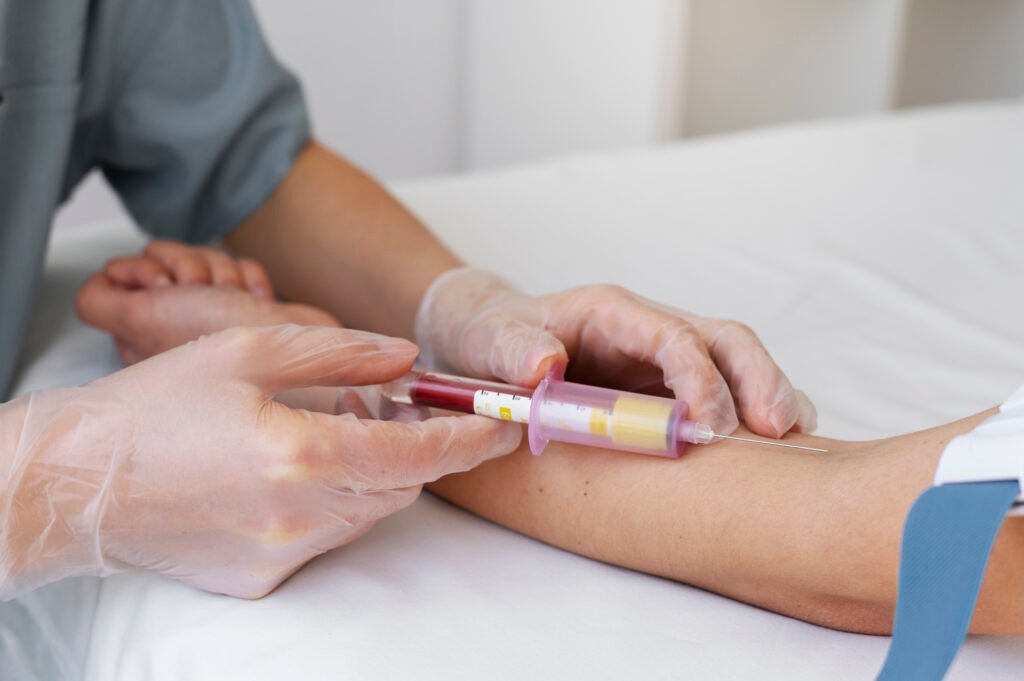- 020 3995 6399
- info@mediqueskills.co.uk
Blogs
The Art of Phlebotomy
- October 16, 2023
- Posted by: Admin
No Comments


THE ART OF PHLEBOTOMY
In the ever-evolving landscape of healthcare, certain professions stand the test of time. One such profession is phlebotomy, the art of drawing blood from patients for various medical purposes. From its ancient origins to its indispensable role in modern healthcare, phlebotomy has a fascinating history that continues to attract students in large numbers to this vital field.
Ancient Beginnings
The practice of phlebotomy, often intertwined with bloodletting, dates back to the ancient civilizations of Egypt, Greece, and Rome. In these early times, it was believed that removing “bad blood” could restore health and balance within the body. Bloodletting was carried out using rudimentary tools, like lancets, and was considered a cornerstone of medical care.
The Middle Ages
During the Middle Ages, bloodletting persisted as a common medical practice, largely influenced by the theory of the four humors. This theory suggested that imbalances in bodily fluids caused illnesses. Surprisingly, it was barbers who were often responsible for bloodletting, as they also performed surgeries.
Renaissance and Enlightenment
The Renaissance and Enlightenment eras brought about a revolution in the medical field. Pioneering physicians like William Harvey’s discovery of the circulation of blood reshaped the understanding of the human body. As scientific knowledge advanced, so did phlebotomy techniques, and the use of lancets became more standardized.
19th and 20th Centuries
The 19th and 20th centuries marked the formal recognition of phlebotomy as a specialized medical procedure. Trained professionals, including doctors and nurses, began using advanced tools like syringes and needles for blood draws. Moreover, the introduction of antiseptic techniques by medical innovators like Joseph Lister greatly improved safety and reduced the risk of infection.
The Modern Era
In the late 20th century, phlebotomy evolved into a critical component of healthcare. Trained phlebotomists have become indispensable, playing a central role in collecting blood samples for laboratory testing, transfusions, and medical research. The introduction of vacutainer systems, which utilize evacuated tubes for blood collection, revolutionized the field by simplifying the process and enhancing patient safety.
Expanding Horizons
The journey of phlebotomy from ancient practices to modern healthcare is awe-inspiring. Today, phlebotomists are not just blood collectors but also healthcare professionals who ensure accurate and safe blood sample collection. This role is critical in diagnosing diseases, monitoring treatments, and conducting vital medical research.
Why Consider a Career in Phlebotomy?
As students consider their future career paths, phlebotomy offers numerous compelling reasons to opt for this course:
Short Training Period
Phlebotomy training programs are relatively short, often spanning a few months, making it an accessible career option.
In-Demand Skill
Phlebotomists are consistently in demand, with job opportunities available in hospitals, clinics, and diagnostic laboratories.
Pathway to Healthcare
It serves as an entry point to the broader healthcare field, allowing individuals to gain experience and explore various medical disciplines.
Patient Interaction
Phlebotomists play a crucial role in patient care, often forming the initial bond with individuals undergoing medical procedures.
Stability and Growth
The healthcare sector is known for its job stability and opportunities for advancement.
Contribution to Health
As a phlebotomist, you contribute directly to patient diagnosis and treatment, making a tangible impact on people’s lives.


